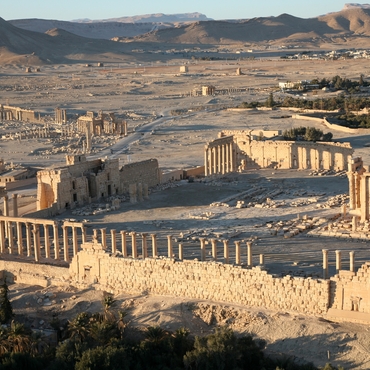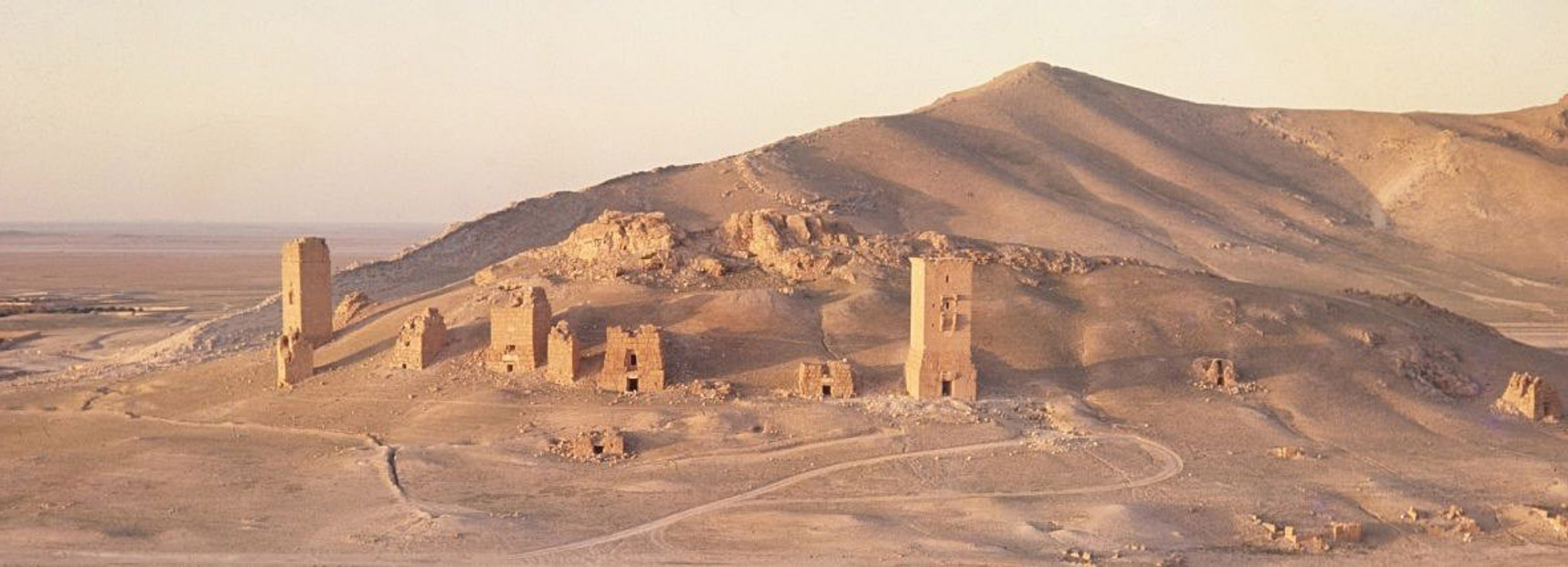
- Home
- Explore the site
- Public and monumental edifices
The city of Palmyra runs to the north and south of a wadi, between the oasis to the east and the Efqa spring to the west.
The oldest district to the southwest, identified by electromagnetic survey and a small number of test pits, reveals streets running north-east – south-west, lined with large but mostly unidentifiable buildings.
The sanctuaries
To the north of the wadi, there were shrines to Allat in the west, Nabu in the centre, and Baalshamin in the north as early as the Hellenistic period. Other buildings must have existed there before the construction of a large north-south colonnaded street to the west of the city (the "transverse colonnade") and then a large west-east porticoed avenue that twice changed direction to take into account pre-existing buildings, including the Temple of Nabu.
A flurry of construction activity
Palmyreans constructed new public and private buildings in this district. The most outstanding, from east to west, were the 2nd-century “baths of Diocletian”, so-called because they were restored in the early 4th century, the early 3rd-century theatre, and the agora for merchants, a vast enclosed space modelled on a Roman market. An amphitheatre may have been identified in the northeast, not far from the present-day museum. In addition to public and sacred buildings, several very large houses, some with a floor area of more than 1,000 sq.m., were excavated near the theatre, north of the great colonnaded street, and on the edge of the oasis to the north and east of the Temple of Bel.
Late fortifications
The city had no ramparts before the late 3rd or early 4th century, although they may have been built a few decades earlier. A wall identified at several points is only a “customs wall”. A city tax was levied on goods crossing this wall.





